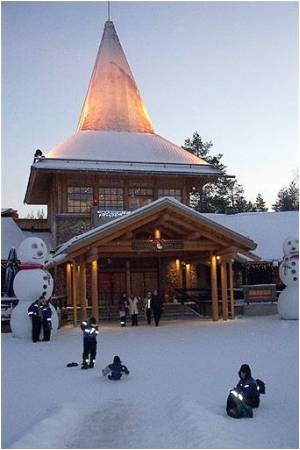
Sinterklaus officially "arrives" in the country in mid-November, on a gift-filled boat from Spain accompanied by some 40 helpers.
It's a fantasy event that keeps this nation of otherwise logical, low-key, no-nonsense pragmatists fixated on their televisions where the "arrival" is transmitted live.
"Every town has its Saint Nicholas, except one or two spots that are largely Protestant," said John Helsloot, a researcher at the Meertens Institute on Dutch culture in Amsterdam, explaining the phenomenon.
And if a town isn't close to one of the country's many waterways or canals, he comes by train or car, said Helsloot.
Two-thirds of Dutch families offer their children their Christmas gifts during this period, according to a study by the GFK market research firm, which showed less than half the nation got Christmas gifts at the time they're generally offered elsewhere in Europe-- on December 24 or 25.
Advertisement
Yvonne Fernhout, spokeswoman for the Dutch Retailers Federation, said sales in the last week are expected to total 470 million euros (629 million dollars) more than the average weekly retail sales, which generally total 1.5 billion euros.
Advertisement
"The children think that Saint Nicholas comes from Spain but he was actually born around 280 in Myra," in Turkey, said Annemieke Langeveld, a member of a Dutch association that promotes the image of the fantasy Saint Nicholas, a testament to the tenacity of the tradition here. A Greek bishop, Saint Nicholas -- who was also the model for the jovial, red-suited modern-day Santa Claus with his sleigh and reindeer -- died on December 6, 342 in Bari, southern Italy, she said.
"The passage towards the 'Christmas concept of Saint Nicholas' goes back to the 16th and 17th centuries," said Helsloot. But unlike Santa, the Dutch Sinterklaus retained characteristics of the Greek bishop with his floor-length red cloak, miter and long white beard -- a figure also found in Belgium, Germany and in eastern France.
He is less merry than the modern-day Santa, though his popular Black Peters -- with faces painted black, lips red and sporting gold hoop earrings -- fill a similar role to Santa's helper elves.
Helsloot says the Peter figure, outfitted in puffy bloomers and feathered caps, may hark back to "the black servant of an important white man," but the famously tolerant Dutch have put a practical spin on the question of "why is Peter dark?"
"Some see racism and discrimination in the image but most Dutch say that Black Peter is black because he came down the chimney," Helsloot said.
Bakers and supermarkets also share in the seasonal windfall, packed with chocolate and cookies including "pepernoten", a special Christmas biscuit flavoured with aniseed.
"We estimate that about 10 million kilos (22 million pounds) in sweets has been sold since the autumn," said Miranda Boer of the Dutch food retail organisation CBL.
Source-AFP














